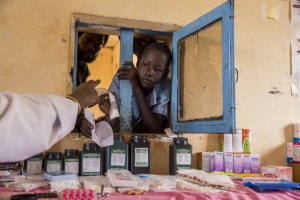6 Facts About Healthcare in Kenya

Kenya is a coastal country located in East Africa. The nation is developing significantly in terms of economy and healthcare provision. However, since there is a high prevalence of natural disasters and poverty, there are recognizable problems when it comes to healthcare in Kenya. For instance, there are 8.3 nurses and 1.5 doctors per 10,000 people. These numbers fall drastically short of the WHO recommendation of 25 nurses and 36 doctors per 10,000 people. Here are six of the major issues related to healthcare in Kenya and how the country is addressing them.
6 Facts About Healthcare in Kenya
- In 2016, malaria was the leading cause of mortality in Kenya. The CDC reported that there are nearly 3.5 million new clinical cases and 10,700 deaths each year. Nevertheless, treatments are on the rise. Long-lasting insecticide-treated mosquito nets and artemisinin combination therapies (ACTs) have proven to be effective prevention and treatment. ACTs are fast-acting and “artemisinin-based compounds are combined with a drug from a different class” to make the treatment. Since the early 2010s, access to ACTs has increased significantly, though there is still a need for access to them in rural areas. In 2019, the WHO reported that Kenya became the third country to implement the world’s first malaria vaccine. Children receive this vaccine as part of routine immunizations, and experts expect it to lower malaria cases significantly in Kenya.
- Kenya has one of the highest rates of HIV-infection in the world. UNAIDS reports that, in 2018, 1.6 million Kenyans were living with HIV. Of this population, Avert, a resource for information on HIV and AIDS, states that more than half are unaware of their HIV status. Fortunately, the Kenyan Ministry of Health has announced that HIV cases are decreasing, with the HIV prevalence standing at 4.9% as of February 2020. To improve HIV status awareness, the Kenyan government has partnered with the EGPAF to invest in door-to-door testing campaigns and self-testing kits. The program has emphasized aiding counties with high or rising HIV prevalence. Additionally, UNAIDS reported that 91% of HIV-positive pregnant women were able to access antiretroviral treatment in 2018.
- Kenya is one of the most highly industrialized countries in East Africa, meaning that pollution is prevalent. Air pollution in Kenya causes death both directly and indirectly. The State of Global Air reports that, in 2017, air pollution directly caused 4,710 deaths in Kenya. Indirectly, air pollution has increased cases of pneumonia, tuberculosis, water pollution and diarrheal diseases, which are among the top fatal diseases in the country. The combined direct and indirect deaths from air pollution total approximately 18,000 each year. However, there is hope for improvement. Inventions like air sensors can report data about air quality. Kenyans are using these sensors to report data via social media and pressure leaders into making change.
- Cancer cases in Kenya are on the rise. As a noncommunicable disease, cancer is one of the leading causes of death in Kenya. The Union for International Cancer Control (UICC) reports that Kenya has 47,000 new cases every year. The UICC also notes that cancer tends to appear in the younger population, and this trend is attributed to lifestyle and environmental changes. To address this crisis, the country is investing in cancer research and support. Additionally, the Kenyan Parliament passed a law to address proper cancer management.
- Infant deaths are one of the greatest challenges facing healthcare in Kenya. UNICEF reports that 74,000 children in Kenya die before the age of five each year. These deaths are often caused by poverty, as many families cannot easily access the resources needed for child healthcare. One such resource is insurance. According to the WHO, in 2018, 80% of the Kenyan population did not have any insurance. As a result, the government set aside $40-45 million to establish Universal Health Coverage to help more people to access appropriate healthcare services.
- There is a stigma surrounding mental health in Kenya. As a result, there are limited resources allocated to mental health awareness, and Kenyans resist seeking help for mental health issues. Despite this stigma, there is intensive research being done to engage both informal and formal health practitioners in addressing mental health problems to improve healthcare in Kenya.
Kenya is determined to address the most challenging problems related to healthcare in the country. There is an emphasis on research and investing in resources to help more people to access better and more affordable healthcare services. Healthcare in Kenya is expected to see improvement in the coming years.
– Renova Uwingabire
Photo: Flickr
